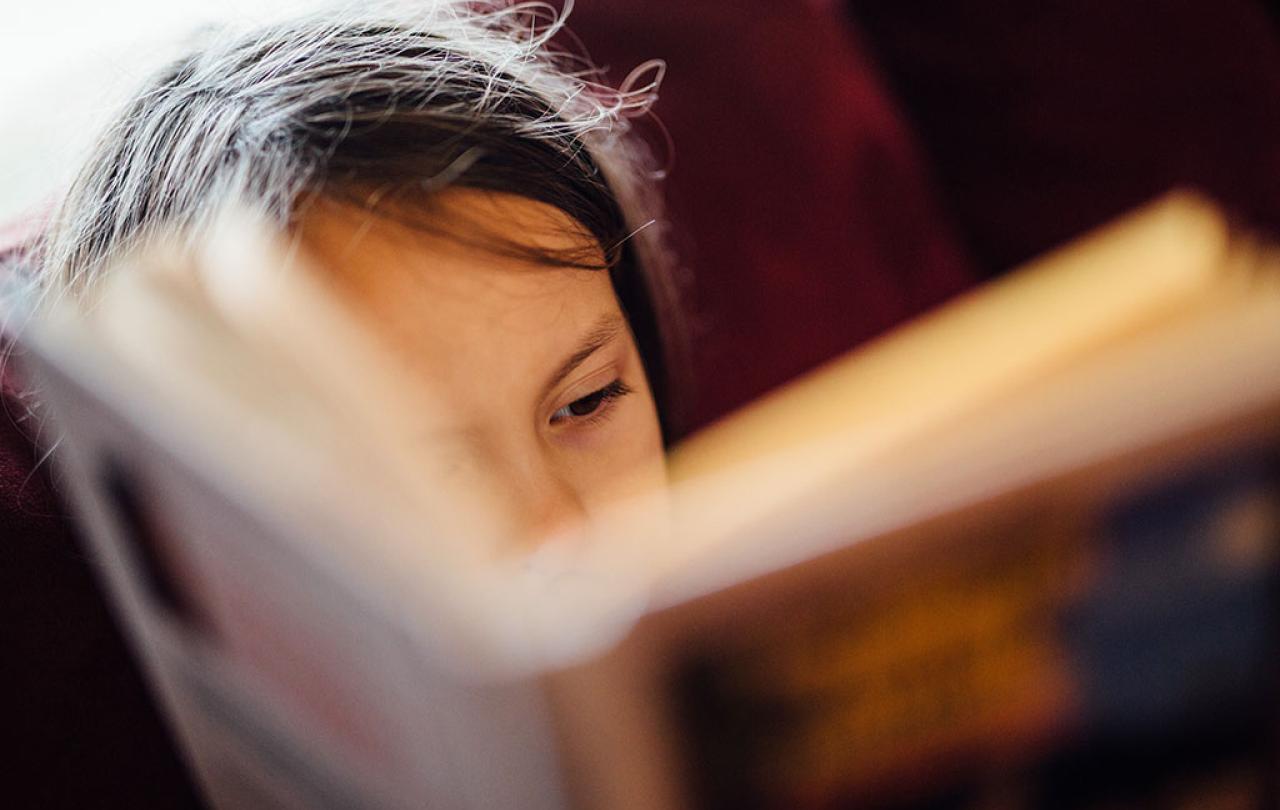
This year, the Waterstones book of the year prize was awarded to Impossible Creatures, a fantasy book for children by Katherine Rundell. This was not the children’s book of the year; this was overall book of the year – it beat novels and non-fiction books for adults. I felt momentarily but deeply joyful when I heard the news and was curious why.
During the pandemic, I found myself unable to read the non-fiction books I usually turn too. Even adult fiction felt heavy. It was children’s books and authors I turned to. Philip Pullman, Dodie Smith, Alan Garner, Ursula K Le Guin. Others new to me. On reflection, I wasn’t reading these books because they were in any way easier, because they weren’t – they asked me to think and hope and imagine much harder than a lot of adult books, despite everything the news would have me believe. And it is for that very reason that I sought these books out. The Waterstones prize made me think a bit more about this – and why it might matter now especially.
Imagination helps us to confront and solve problems – it is not an indulgence, it is essential for the becoming world, and for being the people we are called to be.
First, I thought about my time as a District Councillor in local government. Here, I quickly learned all sorts of things about planning, environment, community, working across opposition and more. I needed to call on my perseverance, patience, strategic thinking. But the things that I found myself calling on again and again were imagination and relationship-building. Building relationships – especially with people who weren’t like me – was the only way to get things done. And imagination because it’s the thing that recreates, that sees things as they could be not as they are. Albert Einstein said, “we cannot solve our problems with the same thinking we used when we created them”, and I’ve seen how that’s true. It did not feel enough, for example, to try to fix problems of dwindling budgets with more cuts and more inefficient meetings. Instead, imagination asked me to think about what this budget-setting process might look like at its best, and how the wider community might help us decide priorities, and how we might restructure our work so that the District doesn’t just scrape by, but thrives. It asked me to step out of business-as-usual, and imagine business-as-it-could-be.
Jesus too shows us the importance of imagination – he so often called out who he saw people to be, not who they were. And he points us now towards what is yet to come. He calls us to wait, and to trust in his arrival – however distant it might feel. Children’s books often do this too: Frodo trusting that the ring would be destroyed, imagining life outside of the grip of the darkness of Mordor, despite all evidence to the contrary. Bastian’s imagination helping to save Fantasia in the Neverending Story. Jo March showing the possibility of another kind of life in Little Women. Imagination helps us to confront and solve problems – it is not an indulgence, it is essential for the becoming world, and for being the people we are called to be.
I think the best children’s books do the same thing – they ask us to look up, to look out, to feel the whisper of the voice behind us urging us on to something more beautiful.
Second, the children’s books I read during lockdown gave me hope in a way that books for adults didn’t at the time. Hope is, I think, innately tied to imagination. It asks us to look ahead, even when things aren’t clear, and walk forward. Rebecca Solnit explores hope, optimism, and activism in her short book Hope In the Dark. She says,
“Hope just means another world might be possible, not promised, not guaranteed. Hope calls for action; action is impossible without hope.”
I think the best children’s literature shows us how to hope, and shows us what right action can look like when we invoke that hope. In Rundell’s Impossible Creatures, Mal and Christopher must save the ‘Archipelago’ – where mythical creatures still live – and the world beyond them from a growing darkness. Hope shines bright, reminding the reader that it is not naïve but necessary and world-changing, if we let it be. Hope changes things. In the New Testament, Paul tells that along with faith and love, hope will remain. When it feels like the world – fictional, or real – is falling away, hope will remain. Coupled with imagination, bound with faith and love, made active with hands and hearts, it might just pull us through to things we cannot yet see.
When she won the National Book Award, Ursula K Le Guin underlined the necessity of imagination and hope right now:
“Hard times are coming, when we’ll be wanting the voices of writers who can see alternatives to how we live now, can see through our fear-stricken society and its obsessive technologies to other ways of being, and even imagine real grounds for hope. We’ll need writers who can remember freedom – poets, visionaries – realists of a larger reality.”
Jesus was the ultimate realist of a larger reality. He asks us to love in the face of hate, to believe that food and wine can come from faith, to believe so hard in love – not as a pink heart-shaped commodity, but as a world-shaking force – that we might literally see resurrection. Jesus lived in a particular place, at a particular time, grounded in people and soil and society, but always pointing to the bigger truth he knew, and to a world that did not yet exist. I think the best children’s books do the same thing – they ask us to look up, to look out, to feel the whisper of the voice behind us urging us on to something more beautiful. Importantly, this is not a rejection of the world as it is – we are called to love our neighbours here and now, to build the kingdom on earth as it is in heaven. But in what is, there is the seed of what could be, there is a light that shines in places that are still dark. I think the gospel, and the best children’s books, help us to see that light and see what it might illuminate. Jesus knew that children’s minds were perhaps better at seeing this light – he even says, “Truly I tell you, unless you change and become like little children, you will never enter the kingdom of heaven.” Allowing ourselves to imagine, to hope, is perhaps the only way we’ll take the kingdom of heaven seriously here on earth.
Katherine Rundell herself has pointed out that children’s books don’t just make good readers, they make good people. I think that with imagination, hope, courage, and more, they help call forth the people we are becoming, and the world that could become. That is why I turned to them during lockdowns, that is why I turn to them now as parts of our world seem dark, and that is why I turn again and again to Jesus – the ultimate realist of a larger reality.





